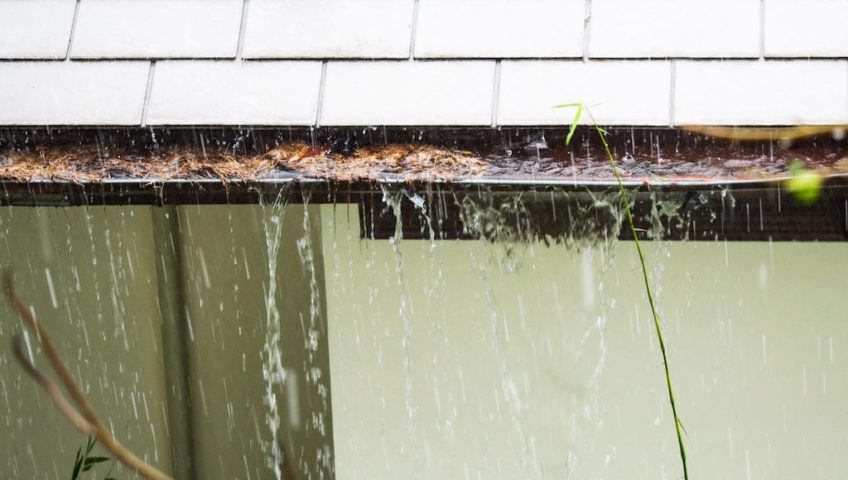Your gutter system is only going to be effective if it’s running smoothly, and while most of the time your gutters should be low-maintenance, if your gutter system is older or hasn’t been maintained in a while, you may run into an overflowing gutter issue. As the name suggests, when your gutters are overflowing, water is running over the top of your gutters, instead of being properly channeled to the downspouts. Overflowing gutters can lead to foundation issues, mold within your home, and soil erosion, so it’s something that should be proactively avoided. Luckily, to prevent overflow, your gutter system just needs a little TLC. Below we will cover the best ways to prevent overflowing gutters – let’s dive in!
1. Keep Your Gutters Clean
The most obvious solution to preventing gutter overflow is ensuring that your gutters are clean. If your gutter system is clogged with leaves, twigs, and other debris it’s only a matter of time before water is unable to freely flow through the gutter system. When that occurs, water will simply pool on top of the debris and quickly spill over the edges causing overflowing gutters. To prevent this from occurring, clean your gutters on a regular basis at least twice a year.
2. Install Gutter Guards
Sometimes regular gutter cleaning is not going to be enough to prevent water overflow. If your home is surrounded by a lot of trees, or you’re having to clean your gutters more frequently than biannually, it might be time to explore adding gutter guards. Gutter guards come in a variety of forms, but their purpose is to prevent debris from entering gutters, while still allowing water to freely enter. Common variations are mesh, bottle brush, and screen gutter guards; qualified professionals like our team at New Vision Exteriors will be able to direct you to the best option for your home.
3. Check Your Gutter Installation
Sometimes gutters aren’t installed correctly, which can easily lead to overflow. The most common issue is gutter positioning; there is a delicate balance with gutters and you want to make sure they’re not tilting too forward or backward. You also want to check the sloping of the gutter system. If your gutters are too flat, gravity won’t be able to assist the water away from your home, whereas steep gutters may cause water to splash out on its way to the downspout.
4. Add Splash Guards
If the roof valley seems to be the cause of your overflow problem, there is an easy solution: installing a splash guard. A splash guard is an L-shaped piece of metal that can be added to the corner of the gutter system near the roof valley. It will prevent fast traveling water from splashing over the gutters onto the ground, and instead direct it through the gutter system as intended.
5. Install Larger Gutters
If all else fails, your gutter system may be too small for the amount of rain your area receives or the amount of runoff your home produces. Common reasons for needing larger gutters are that you live in an area with high-precipitation or your home’s roof is steeply-pitched. If you believe that’s the case for your overflow issue, we recommend having a professional installer confirming your suspicions before investing in a whole new system.
If you’re ready for a new gutter system or are interested in adding gutter guards to your current gutters, our team of experts at New Vision Exteriors is ready for the job. Give us a call to discuss your needs today!

